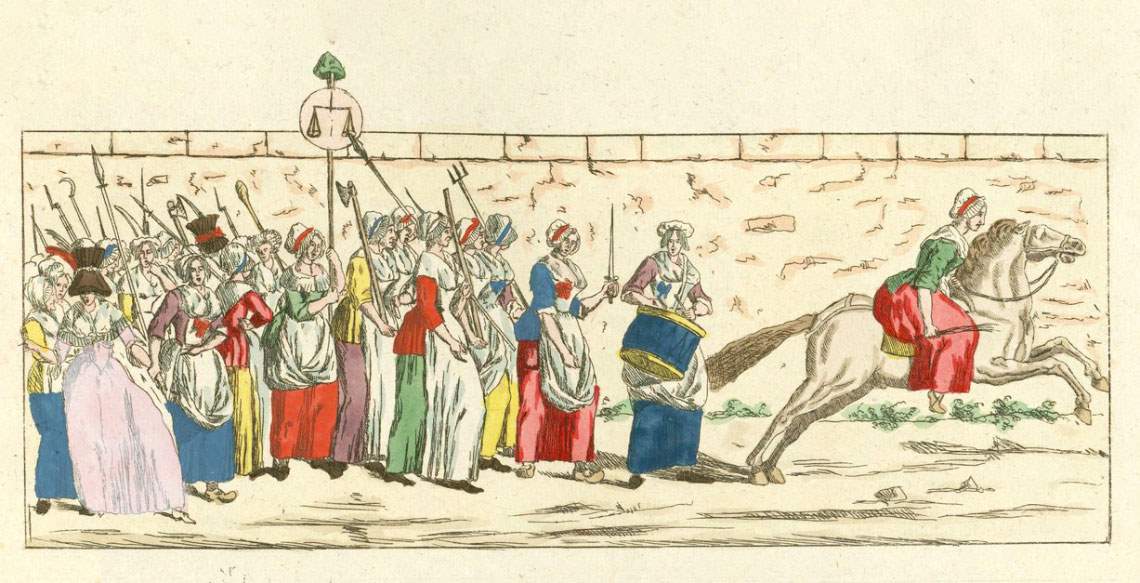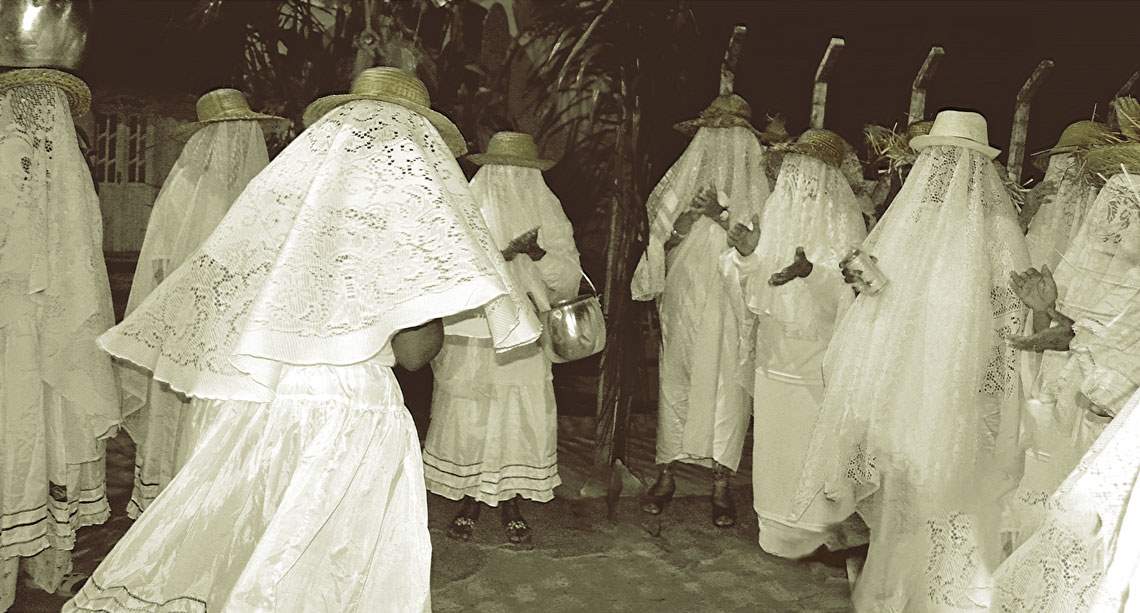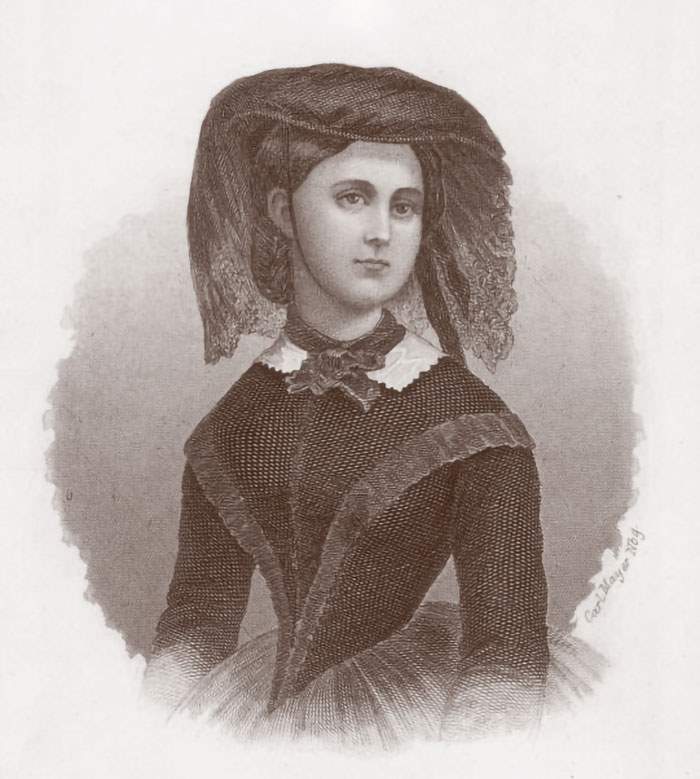On May 13, 1822, a group of 186 women sent Maria Leopoldina (1797–1826) the Letter from the Bahian women to Her Royal Highness Dona Leopoldina, congratulating her on her role in the patriotic rulings of her husband, Prince Regent Dom Pedro. The document acknowledged the contribution made by the then princess and future empress to ensuring her husband’s permanence in Brazil, which they believed was a key factor in gaining independence from Portugal. “Far more than just a letter, it is a political manifesto,” notes historian Maria de Lourdes Viana Lyra, of the Federal University of Rio de Janeiro (UFRJ) and author of books such as A utopia do poderoso império. Portugal e Brasil: Bastidores da política, 1798–1822 (The utopia of the mighty empire. Portugal and Brazil: A behind-the-scenes look at politics, 1798–1822; Sette Letras, 1994). “At that time, in Brazil, women were given a subordinate role restricted to private household and family affairs. Outwardly, women were made invisible, but that did not stop them from mobilizing politically to fight for independence in a variety of ways,” she states. In an article on the subject, Lyra calls attention to the fact that, in addition to isolated actions led by famous figures such as Leopoldina herself, there were other “much more significant” actions that are still largely unknown to the general public. More specifically, collective mobilizations of women active in the public arena during the fight for Brazil’s independence. Historian Andréa Slemian, of the Federal University of São Paulo (UNIFESP), agrees and expands on the matter. “Throughout this process, many women expressed themselves through letters, manifestos, and other texts. Thus, the nascent press in Brazil played an important role, not only by publishing these women’s ideas regarding independence on the newspaper’s editorial page, for example, but also by serving as a mouthpiece to support matters related to women’s rights,” notes Slemian, who has spent nearly 20 years studying the Portuguese colonization of the Americas and Brazil between the eighteenth and nineteenth centuries.
The mobilization of women was far from novel in Brazil, according to Lyra. “There are records of women’s movements in Pernambuco in the seventeenth and eighteenth centuries, for example. When the Dutch invaded Brazil, a landowner was arrested and a group of women asked the governor, João Maurício de Nassau [1604–79], to intervene and release the prisoner,” she recounts. During the fight for independence, however, this behavior intensified in the revolutionary tide. “Women actively participated in the French Revolution [1789–99], which resulted in the Declaration of the rights of woman and of the female citizen [1791]. This movement impacted society at the time in different parts of the world to varying degrees,” says Lyra.

New York Public LibraryIllustration of the Women’s March on Versailles, during the French RevolutionNew York Public Library
Women’s participation in Brazil’s independence was not restricted to the written word. “There were women who looked after properties and businesses and who followed what was happening in the public arena,” recalls Slemian. Such is the case of plantation owner Bárbara Pereira de Alencar (1760–1832), who took part in the Pernambucan Revolution of 1817 in Ceará, Brazil. “The province of Pernambuco was required to pay large monthly sums to the Portuguese royal court who had lived in Rio de Janeiro since 1808. In addition, the presence of the royal court inflated prices in the province. All these factors gave rise to widespread discontent from the elite to the working class, thus triggering the revolution,” recounts historian Flavio José Gomes Cabral, of the Catholic University of Pernambuco (UNICAP), who is writing a book on the event. “The uprising began in Pernambuco and extended to Ceará, Rio Grande do Norte, and Paraíba.”
Born in Pernambuco, Alencar moved to Ceará after her marriage, where, once widowed, she took over the Pau Seco sugar cane mill, in the Crato region. “On her mother’s side, she was of indigenous descent and, on her father’s side, Portuguese,” says Cabral. Two of her children attended the Episcopal Seminary of Nossa Senhora da Graça de Olinda, within the Diocese of Pernambuco, the province’s embattled revolutionary nucleus. One of her children was José Martiniano Pereira de Alencar (1794–1860), who would later become the father of novelist José de Alencar (1829–1877). “With his mother’s support, José Martiniano disseminated his ideas within the Crato region. He was in favor of the revolution and mainly organized meetings that attracted relatives and family friends,” adds the researcher.

Brazilian National Library Book about the life of Bárbara de AlencarBrazilian National Library
While the revolution was unraveling, Bárbara de Alencar was arrested on June 13, 1817, and taken to the city of Fortaleza. “Before her departure, she was subjected to public shaming in the streets of Crato,” recounts Cabral. She regained her freedom nearly three years later, in November of 1820, after serving her sentence in Recife and Salvador. “Bárbara de Alencar’s story is still not well known,” notes Lyra. One reason for this, according to the expert, is that throughout the nineteenth and twentieth centuries, Brazilian historiography related to Brazil’s Independence focused on September 7, 1822, and the movements led by men in Minas Gerais, Rio de Janeiro, and São Paulo.
According to Slemian, the last two decades have revealed a change in this scenario, with Brazilian universities developing curriculum centered around diversity. “But there is still a lot to be researched,” he states. One of the major difficulties hindering the development of new research involves original official sources, according to Sérgio Armando Diniz Guerra Filho, of the Federal University of Recôncavo da Bahia (UFRB). “These documents were written by white, upper-class men and generally dismiss the participation of other segments of society, such as the poor, women, Black and Indigenous people,” says the historian, whose master’s thesis centered on the role of grassroots participation in the Brazilian War of Independence in Bahia (1822–1823).

Coleção Anne S. K. Brown, Brown University, ProvidencePortrait of Maria Quitéria de Jesus (1792-1853)Coleção Anne S. K. Brown, Brown University, Providence
However, traces of women’s presence can be seen in mass demonstrations, sustains the scholar. “Since the nineteenth century, parades for Bahia’s Independence Day, celebrated on July 2, honor the Caboclo figure. These symbols of grassroots participation in the war against the Portuguese are often female, as is the case in the town of Santo Amaro da Purificação,” describes Guerra Filho. Another indication of women’s involvement can be seen in the parade known as “Careta do Mingau,” which in July takes over the streets of Saubara, also in the Recôncavo region of Bahia. “Women cover themselves in sheets in remembrance of the compatriots who used to dress up as ghosts to bring food to entrenched combatants at dawn. Preparing food and mending uniforms, as well as caring for the injured in the infirmary, are other ways that women participated in the fight for independence,” says the researcher.
However, not all women were in the rearguard, as demonstrated by Maria Quitéria de Jesus (c. 1792–1853), who disguised herself as a man and adopted the nickname “Soldier Medeiros” to fight the Portuguese in Bahia. “She was recognized among the troops for her marksmanship, and her real identity was only revealed when her father showed up to retrieve her from Cachoeira, the then provisional capital of Bahia. Quitéria refused to return home and continued fighting,” says Guerra Filho. In 1823, Pedro I appointed the combatant a Knight of the Imperial Order of the Cross, in Rio de Janeiro.
The image of Maria Quitéria as a heroine of the War of Independence took hold at the beginning of the nineteenth century, notes the art historian Nathan Gomes in his master’s thesis “Theater of memory, theater of war: Maria Quitéria de Jesus in the construction of national imaginary (1823–1979).” Defended in April, at the University of São Paulo’s Brazilian Studies Institute (IEB-USP), this study was supported by FAPESP. According to Gomes, the Bahian woman’s story gained prominence when it was recounted in the book Journal of a voyage to Brazil and residence there during parts of the years 1821, 1822 and 1823. The book consisted of a travel report recorded by the English artist and writer Maria Graham (1785–1842) who, among other activities, worked as a governess for Pedro I and Leopoldina’s children in Rio de Janeiro.
Released in 1824 by the British publisher Longman & Co., the publication also featured a portrait of the Bahian woman created by English painters Augustus Earle (1793–1838) and Denis Dighton (1792–1827), in addition to the engraver Edward Finden (1791–1857), as credited in the thesis. “It is a full-body portrait, with Quitéria wearing a petticoat over her uniform. This was the image of her that stuck,” noted Gomes. Between 1840 and 1930, a series of actions developed mainly by the Brazilian Historical and Geographical Institute (IHGB), the Geographical and Historical Institute of Bahia (IGHB), and the Paulista Museum (MP) contributed to ensuring her fame remains part of the nation’s collective memory. “Her consecration reached a pinnacle during the Independence Centennial Exposition in 1922,” states the researcher. At the time, the Paulista Museum, which now belongs to USP, displayed a portrait of Maria Quitéria in its Noble Room. The portrait was painted in 1920 by Italian artist Domenico Failutti (1872–1923) and was featured alongside paintings such as Independence or death! (1888) by Pedro Américo (1843–1905).

IpacCareta do Mingau parade, a demonstration that references the role of women in gaining independence, in BahiaIpac
The process of appropriating Maria Quitéria’s image evolved over time, as the study shows. In 1953, one hundred years after her death, the first biography of the Bahian officer was published. The book, which romanticizes her life, was written by Manuel Pereira Reis Júnior, a Bahian historian in charge of the centennial commemoration event. That same year, the Brazilian Army required that the combatant’s portrait be hung in its offices and created the Maria Quitéria commendation. Much later, in 1996, she would become the Patron of the Corps of Support Staff Officers of the Brazilian Army. “In the 1980s, the Brazilian Army began accepting female officers,” adds Gomes. The research project extends to the 1970s, when the Women’s Movement for Amnesty (MFPA) used Maria Quitéria’s image as a symbol against authoritarianism in the military dictatorship (1964–1985). Created in 1975 by a group of women from São Paulo, the MFPA quickly spread across the country. Spearheading the initiative was homemaker and activist Therezinha Zerbini (1928–2015) whose husband, a serviceman, was removed from duty by the coup d’état. “Therezinha had long been fighting the dictatorship. She helped organize the clandestine conference of the National Students Union (UNE) held in Ibiúna, São Paulo, in 1968, for example,” recounts Gomes.
The MFPA’s decision to use Maria Quitéria as a symbol was part of a deliberate strategy by the movement to associate itself with a figure already integrated into the pantheon of the Armed Forces, but whose significance extended beyond the military sphere. For example, she could represent defending women’s participation in politics,” Gomes points out. “They believed that, in doing so, they could act with more volition.” The strategy worked only partially. In 1977, the first edition of the Maria Quitéria newsletter, in addition to posters and pamphlets featuring her image, were seized by the National Information Service (SNI), which also used a photographer to infiltrate the movement at a demonstration it participated in that year in Salvador.

NyplPortrait of Maria Leopoldina by an unknown authorNypl
Moderate alternative
In the Paulista Museum’s Noble Hall, which houses Maria Quitéria’s portrait, there is a canvas honoring Empress Leopoldina, also painted by Failutti in the 1920s. “Born in Vienna, Leopoldina was the daughter of Francisco II, Emperor of Austria, and was educated to eventually rule. Upon marrying the Crown Prince of the United Kingdom of Portugal, Brazil, and the Algarves, future Emperor Dom Pedro I, she moved to Brazil with the belief that strengthening the monarchy in the tropics would be beneficial for maintaining absolutism, which had been failing in Europe since the French Revolution,” says Lyra, of UFRJ, and author of the Austrian woman’s biography that is part of the book Rainhas de Portugal no novo mundo: Carlota Joaquina, Leopoldina de Habsburgo (Queens of Portugal in the new world: Carlota Joaquina, Leopoldina of Habsburg), published by the Portuguese publisher Círculo de Leitores, in 2011.
According to Slemian, Leopoldina became politically active in the Portuguese royal court mainly in the early 1820s. “She played an important role in the process of gaining independence, which she exercised with extreme rationality, much more prudently than her husband,” notes the expert, author of the entry about Leopoldina in Dicionário da Independência: História, memória e historiografia (Dictionary of Independence: History, memory, and historiography), to be released in the second half of this year. “However, her actions cannot be misrepresented. Leopoldina was conservative, terrified of social upheaval, and she fought for a moderate alternative to independence, while keeping the prince on the throne. This was, ultimately, what took shape in 1822,” he concludes.
Republish


